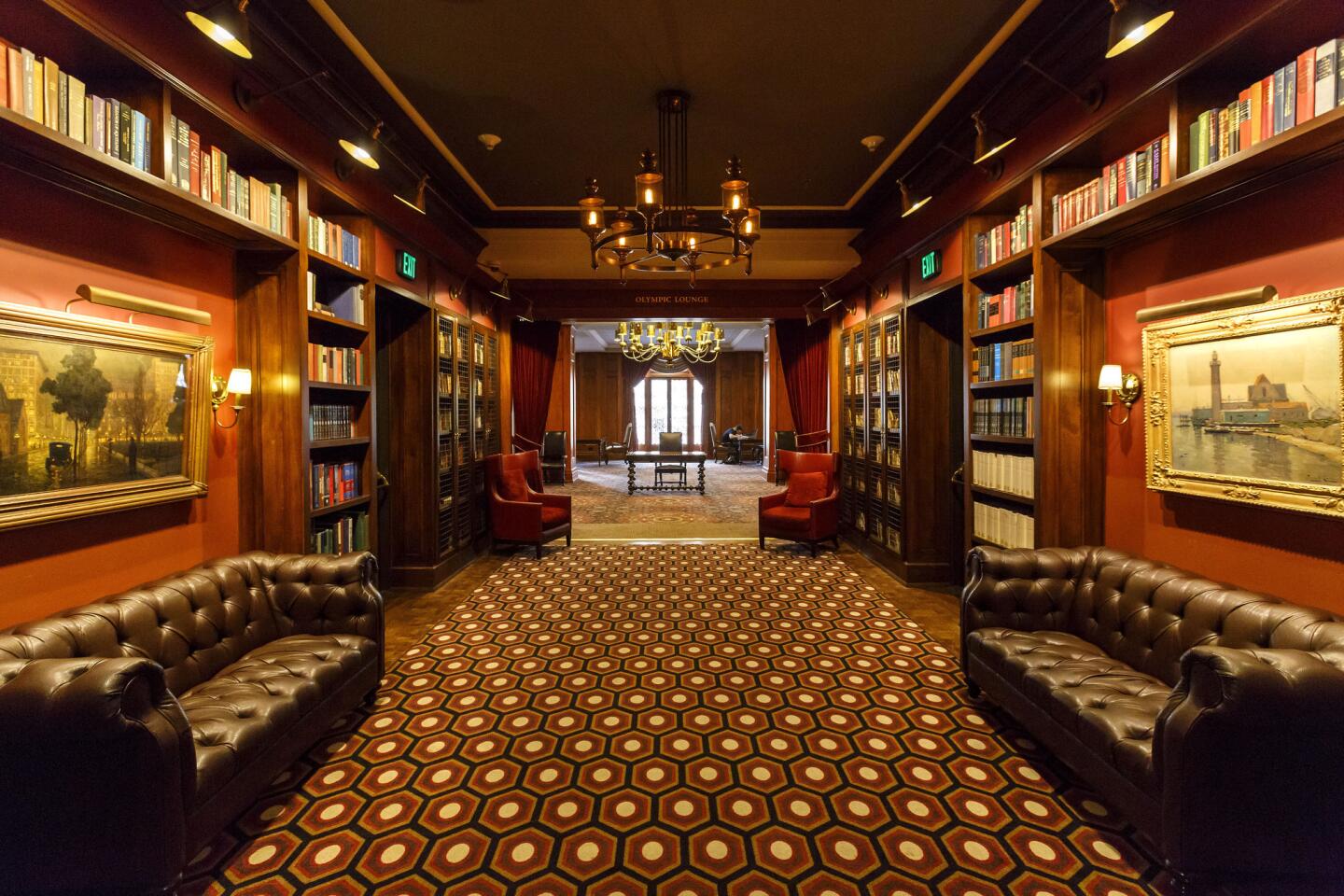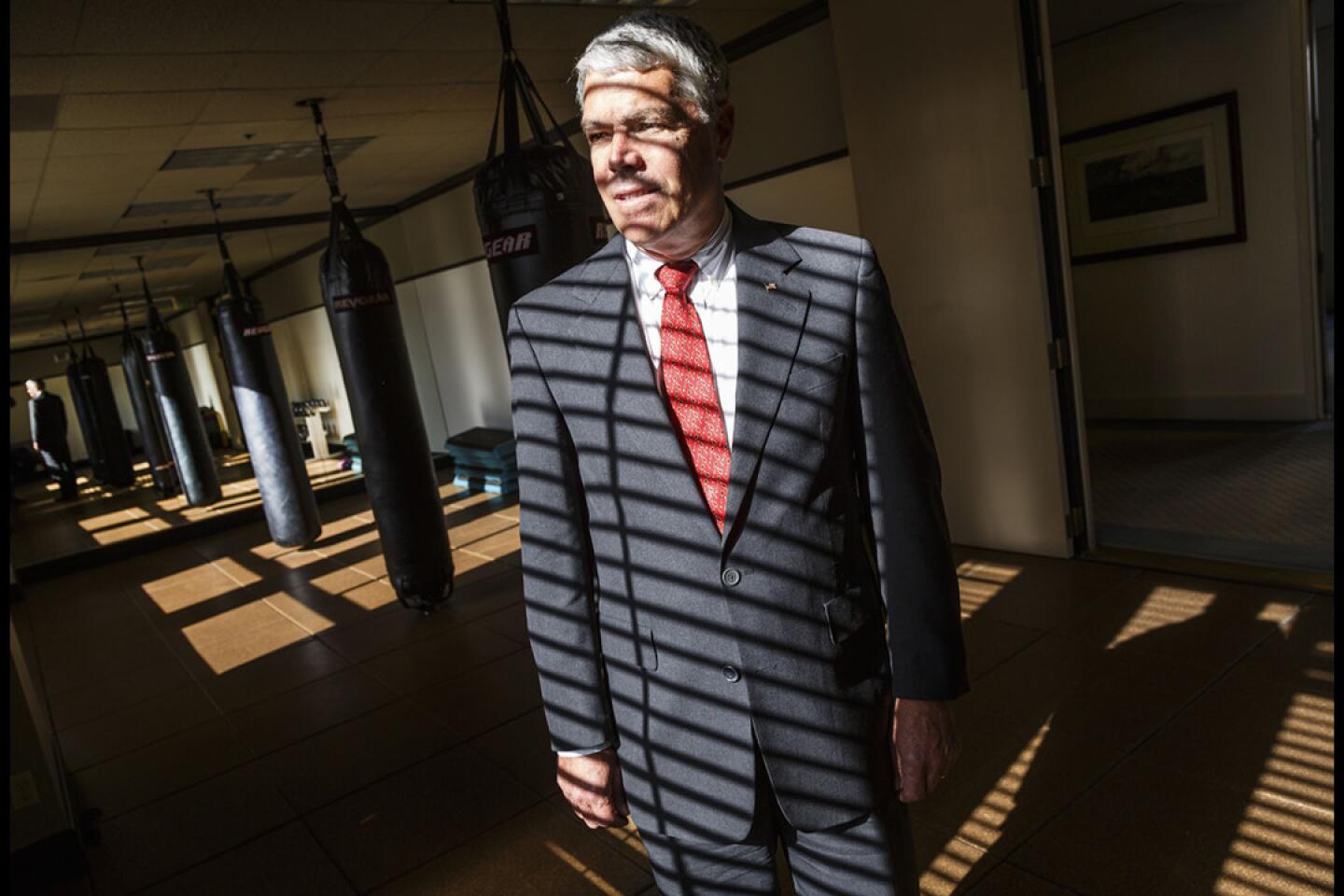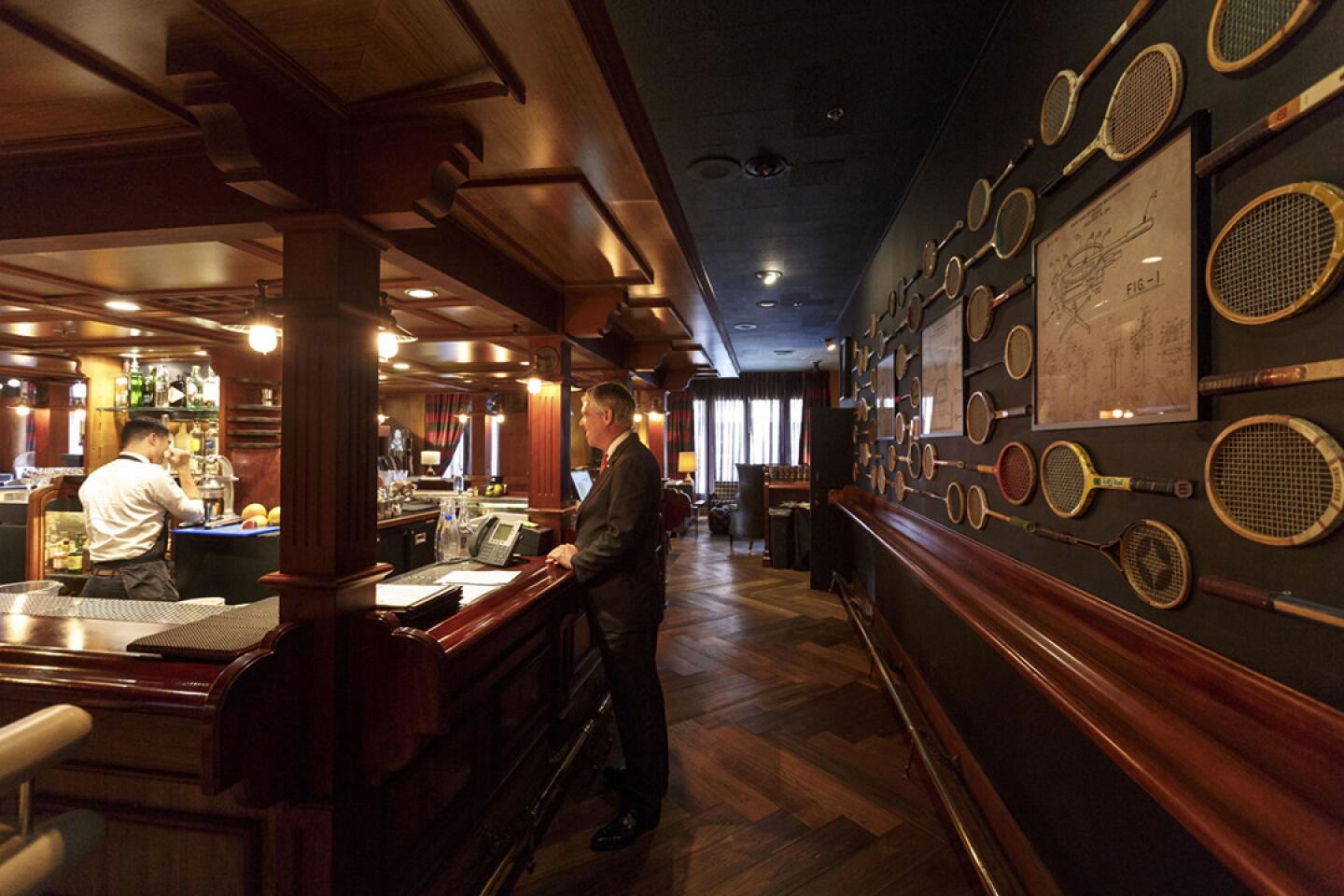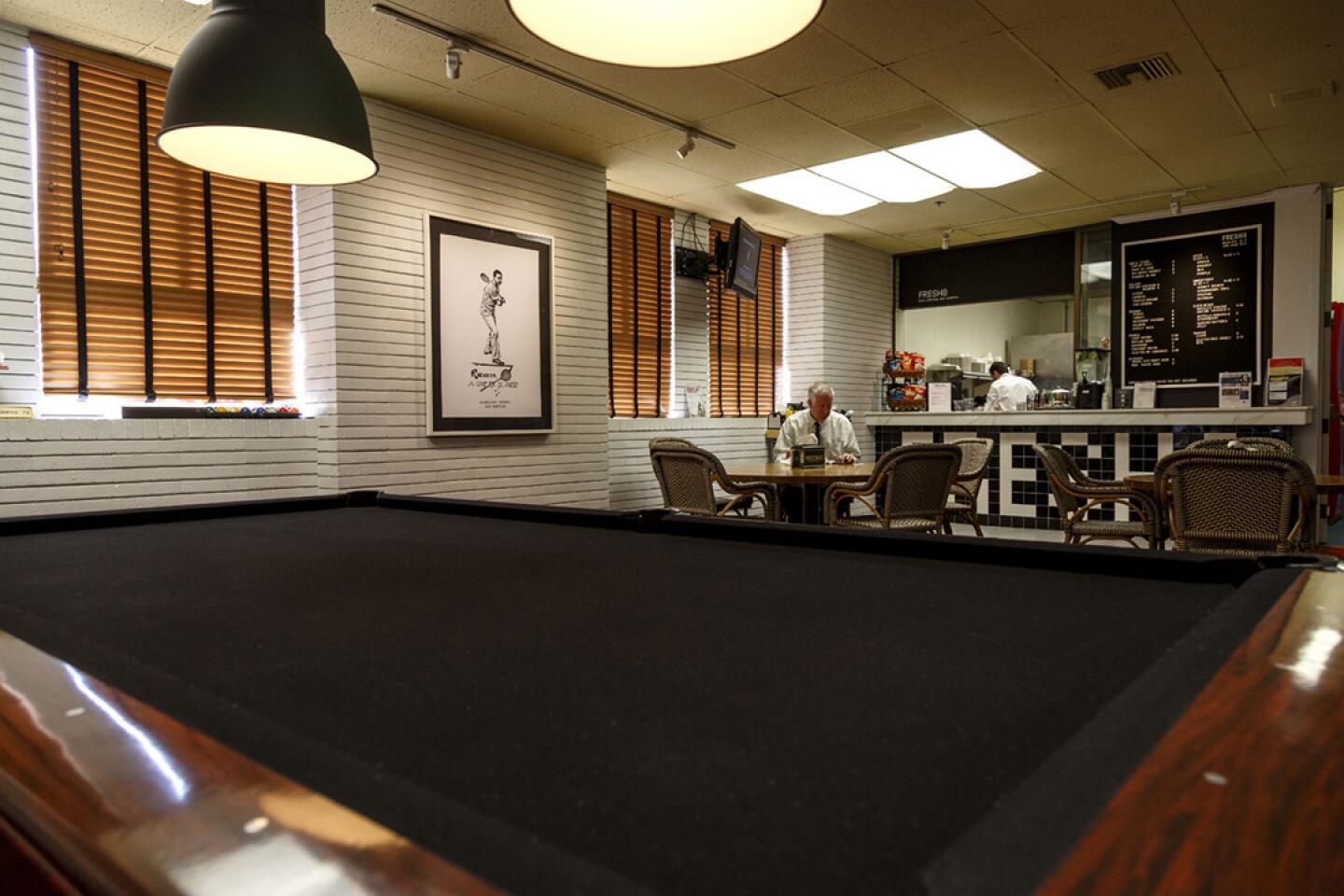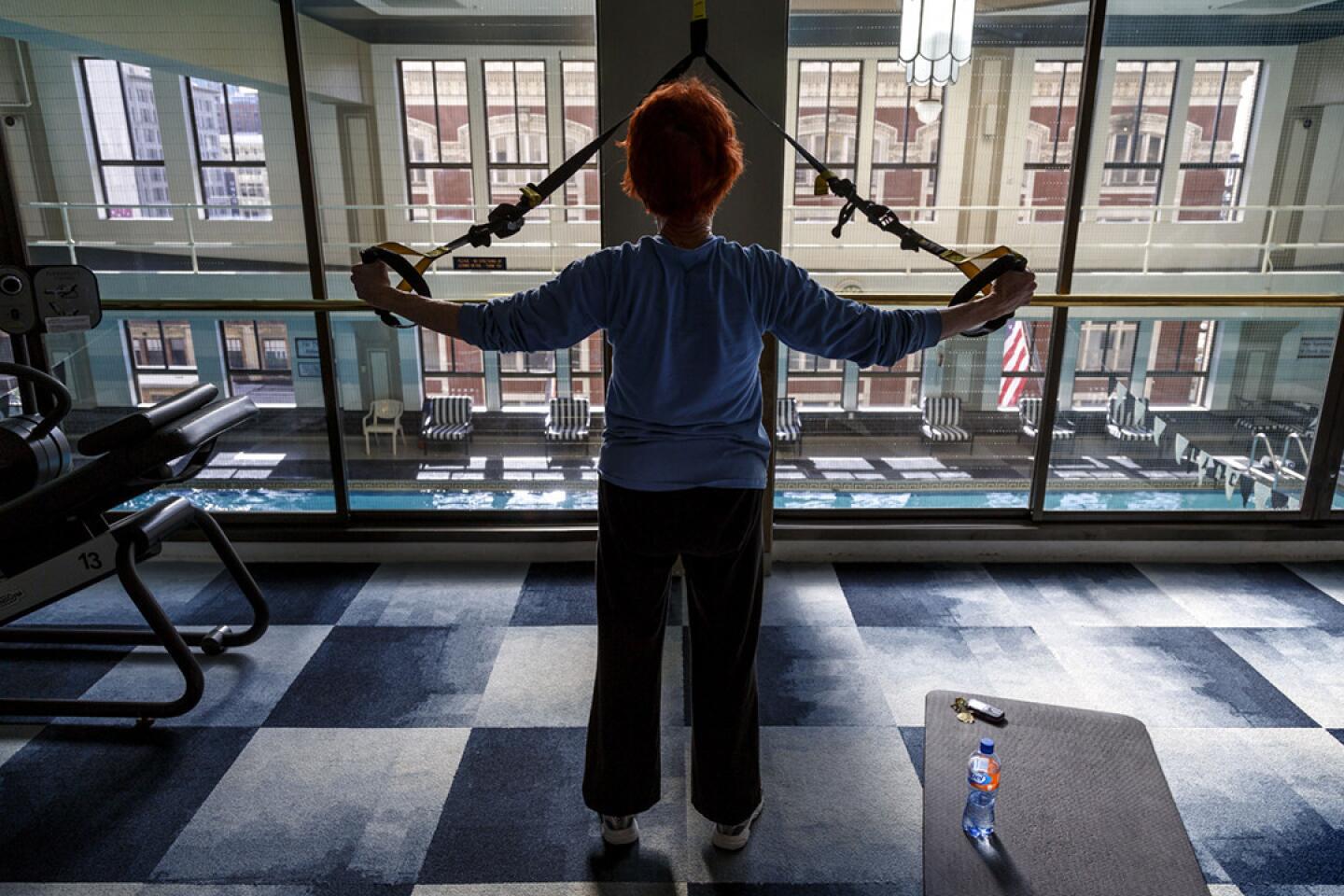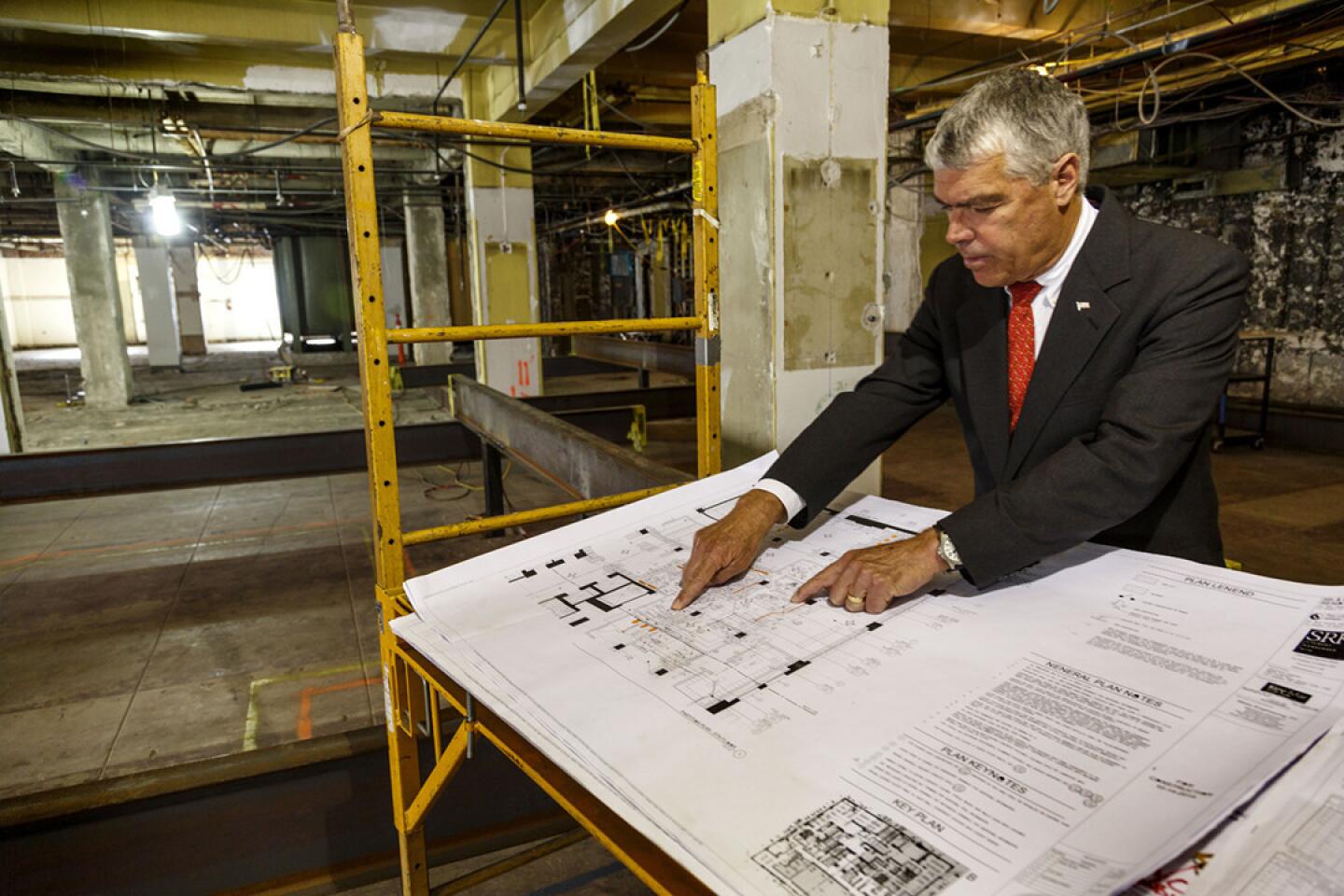Venerable Los Angeles Athletic Club aims for more youthful look
- Share via
On a recent weekday afternoon, one of the newest members of the Los Angeles Athletic Club sat in a high-backed chair in the club’s plush Olympic Lounge. With its thick carpet, dark mahogany-paneled walls and heavy curtains, the room looked every bit the bastion of gentility it was built to be more than a century ago.
But instead of a tweed jacket, Dimitri Beshkov was wearing a snug black T-shirt and he was tapping away on a laptop he had pulled out of a backpack — all faux pas at traditional clubs that enforce dress codes and forbid members from doing anything that looks like work in their hushed communal lounges and dining rooms.
“A lot of clubs don’t allow business use” of their facilities, General Manager Steve Hathaway said. “We encourage it.”
The venerable institution with a storied past and blue-blood roots is spending millions of dollars to make itself appealing to a new generation of more laid-back downtown denizens.
The move reflects an acknowledgment that intense real estate development in recent years has changed the face of downtown by bringing in thousands of new residents, many of whom are young entrepreneurs accustomed to working wherever they may be.
“We are trying to create the feeling that this is almost an extension of the office or loft or condo,” Hathaway said.
The club will spend about $10 million on improvements meant to update the facilities and appeal to members’ changing tastes. Pilates, spinning, yoga and open NBA-style locker rooms are in. Racquetball, which swept the country in the 1970s, is losing popularity to the older racquet sport of squash.
Youth will be served, as the old proverb goes, if private clubs hope to thrive in the digital age.
The days “when men left for the club and stayed out late” are gone, said Crystal Thomas, executive director of the California State Club Assn. Aging membership rolls are a threat to many clubs’ survival.
“All clubs need to do whatever they can to bring in younger members,” she said. “The clubs that are really successful are really trying to bring down their average age.”
Fortunately for Hathaway, whose family has operated the Athletic Club for generations, the neighborhood around his building is on a major growth spurt. Obsolete office buildings from the early 20th century have been converted to apartments, and thousands of new housing units are being built.
It’s quite a turnaround for the area outside the club’s doors. When the building was erected in 1912 at 7th and Olive streets, the location was considered a proper address by the city’s elite citizens.
The Times wrote about the club’s opening gala in June of that year: “In a gorgeous spectacle with the very social elect of Los Angeles arrayed in almost barbaric splendor the new clubhouse was formally thrown open. The miracle of mixing athletics with society was accomplished.”
But by the 1980s, the club stood beyond the boundaries of downtown’s upscale office district and the streets outside were unsavory to the well-dressed men and women in the glass office towers.
Now the neighborhood is coming back. Seventh Street is home to some of downtown’s top restaurants. and once-vacant office buildings nearby are filled with residents who pay substantial rent. Most are younger than 40.
“We need to focus on the needs of this group of people becoming the core of our membership,” Hathaway said.
The makeover is being done in phases, with the focus now on the fifth and sixth floors, where many of the key athletic facilities are found.
As designed by prominent Los Angeles architect John Parkinson, the club was the first structure in Southern California to have a swimming pool above ground level. The sixth-floor “plunge,” as the pool has always been called, was built like the hull of a ship and is held in place with steel plates fastened together by rivets.
But there was no women’s locker room when the club opened because membership was limited to men. The 1960s addition of women’s changing facilities took up space on the pool deck where there was once a restaurant.
“There were waiters in white jackets serving food on white tablecloths around the pool,” said architect Brian Kite of SRK Architects, who is designing the makeover.
New side-by-side locker rooms will be built for men and women on the fifth floor, and the Plunge Cafe will be re-created by the pool. Renovations will include new shops, including a barbershop and nail salon. A new grand stairway will connect the fifth and sixth floors
One of the biggest structural challenges is cutting holes in the fifth floor to make room for new whirlpool baths in the locker rooms. There will also be a cold plunge pool and a spa facility that will include a European-style therapeutic salt suite environment meant to ease members’ respiratory conditions.
The Los Angeles Athletic Club dates from 1880 and has had members with such prominent last names as Lankershim, Chandler, Dockweiler, Doheny, O’Melveny and Slauson. Movie stars such as Mark Pickford, Rudolph Valentino, Charlie Chaplin and Johnny Weissmuller once congregated at the club.
But its future is apparently is in the hands of young members like Beshkov, who said he was studying for law school entrance exams in the Olympic Lounge.
“This is like a second home,” he said. “I play, study and meet up with friends. I’d say my membership is 51% social and 49% athletic.”
One longtime member, 91-year-old developer Jerry Epstein, said he approves of the changes and relishes holding meetings in the Athletic Club’s subdued dining areas.
“When you are in a club” instead of a restaurant, he said, “you don’t have to scream at each other.”
Twitter: @rogervincent
More to Read
Inside the business of entertainment
The Wide Shot brings you news, analysis and insights on everything from streaming wars to production — and what it all means for the future.
You may occasionally receive promotional content from the Los Angeles Times.
